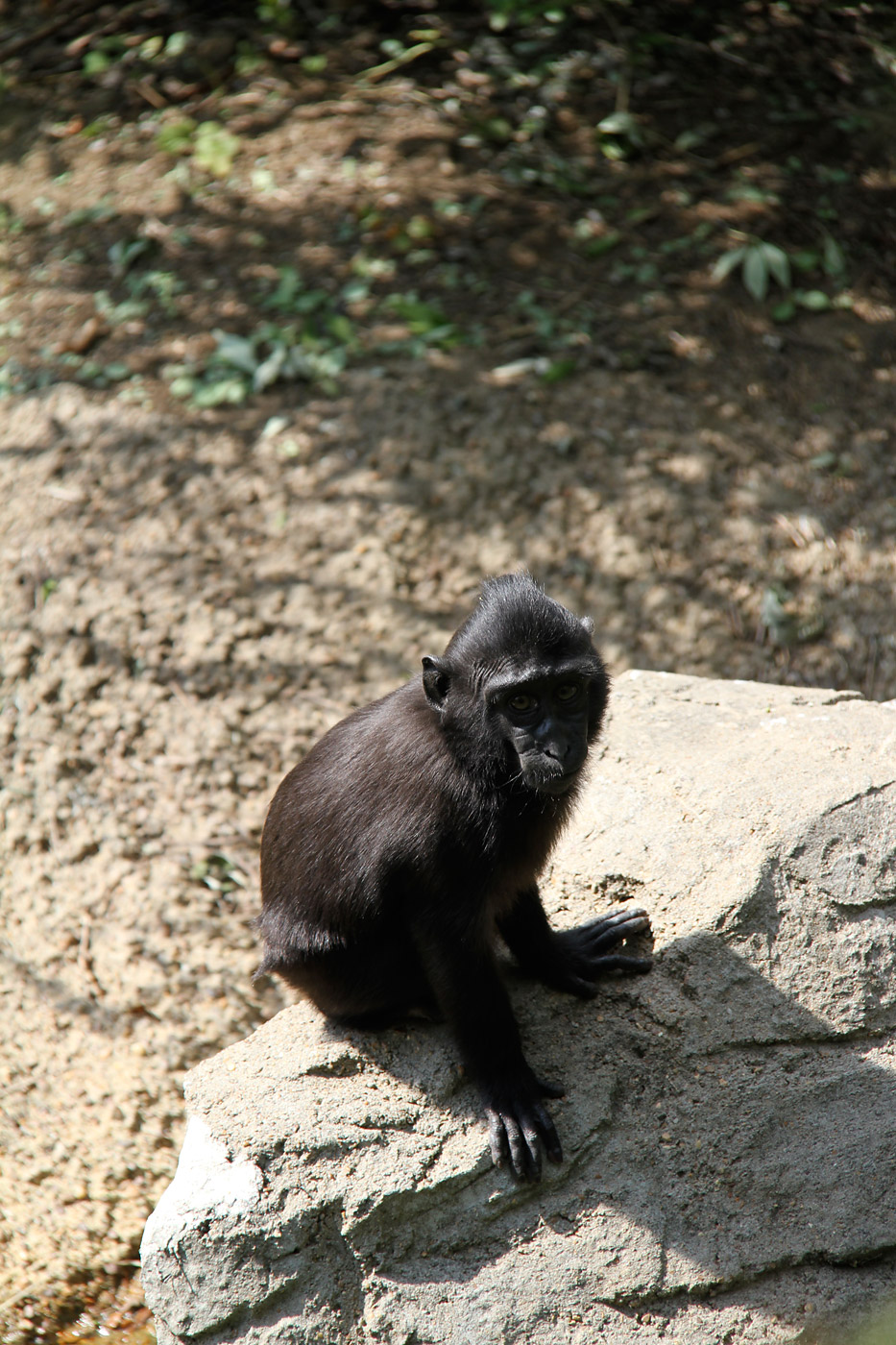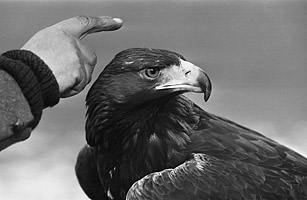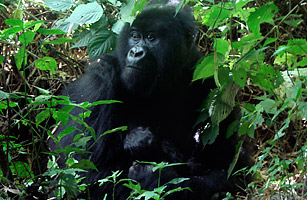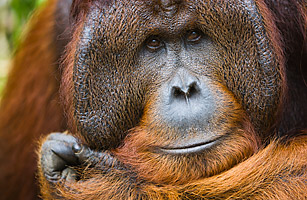Zimm the Monkey, Memphis

A very small — and, according to zoo workers, “very spirited” — macaque escaped its enclosure at the Memphis Zoo on July 9, 2015. This 10-pound primate, named Zimm, was described as harmless — and probably escaped by climbing into a storm drain on the property.
As of the next day, zookeepers were still searching for 3-year-old Zimm. How were they trying to entice her? With all her favorite foods: strawberries, apples, bananas, and peanuts.
–Samantha Grossman
Rusty the Red Panda, Washington, D.C.

They’re known for mostly lazing about during the day, their fur-covered bodies stretched over tree limbs. But one panda at the National Zoo in Washington, D.C., wasn’t spotted in his normal habitat Monday morning. So the Zoo took to Twitter to recruit the public’s help. Accompanying a photo of the small woodland creature were the vitals: “a missing red panda, a male named Rusty. He was last seen at 6 p.m. last night.”
Zookeepers wouldn’t reveal just how the panda escaped — or if it even left the premises. The @NationalZoo Twitter account kept loyal red panda watchers up-to-date on the search for Rusty. As word of the search quickly spread, D.C. residents vigilantly looked out for the adorable animal, which resembles a cross between a bear and a raccoon. In the early afternoon a photo of Rusty scampering through a residential neighborhood was posted on Twitter — given the rarity of red pandas, it was very likely Rusty. Within the hour, animal control teams had captured him and put him in a crate, promptly herding him back to the zoo.
The red panda has little in common with its giant black-and-white cousins aside from a common Chinese heritage. But Rusty hails from Nebraska, arriving in D.C. two months ago. His impromptu tour of his new city has come to a safe end.
—Nick Carbone
Humboldt Penguin, Tokyo

The zookeepers at Tokyo Sea Life Park might have been a bit baffled when they received an emailed photo on Mar. 4 of one of their Humboldt penguins swimming in a river nearby. Upon counting their chicks, they discovered they were indeed one short of the 135 that usually roam the exhibit. The missing one-year-old penguin had somehow managed to scale a rock wall nearly twice its height (remember, penguins can’t fly) and chart a course around Tokyo Bay. After it was spotted by a director of another zoo nearby, who sent the photo, a widespread recovery mission commenced to find the tuxedoed fugitive. But zoo officials discouraged untrained locals from attempting to catch the speedy swimmer and plan to recapture the bird when it returns to land to sleep.
—Nick Carbone
Egyptian Cobra, the Bronx, New York

It’s one thing to see a television news report showing clips of animal control officials trying to capture an escaped zebra or monkey — those are storybook animals. But it’s an entirely different thing when a zoo loses a snake. Some of the biggest and bravest people are terrified of the scaly reptiles. So when the Bronx Zoo shuttered its World of Reptiles exhibit on March 26 with postings that read “staff observed an adolescent Egyptian cobra missing,” panic spread across New York City for fear that the highly venomous snake would turn up where it didn’t belong.
Zoo director Jim Breheny tried to allay fears by explaining that the snake was more than likely somewhere in the reptile house and that because of the animal’s size — it’s less than 2 ft. long and pencil thin — finding the serpent was proving more difficult than they had imagined. In a statement posted on the zoo’s website, Breheny wrote, “Right now, it’s the snake’s game. At this point, it’s just like fishing; you put the hook in the water and wait.” It’s the snake’s game alright — or the fake snake’s game. Some clever opportunist created a fake Twitter feed called @bronxzooscobra to poke fun at the situation. The tweets are amusing, but let’s hope the snake didn’t slither over to the zoo’s nearby Mouse House.
—Frances Romero
Goldie the Eagle, London

Goldie the golden eagle escaped from the London Zoo on Feb. 28, 1965, while his cage was being cleaned. He swooped and soared around Regent’s Park, evading capture for 12 days despite attempts by police, firefighters and even an intrepid BBC reporter wielding an Ethiopian bird pipe to snag him. The London public adored Goldie; a reported 5,000 people turned out to see the free bird in action, causing serious traffic jams around Regent’s Park. Goldie was eventually recaptured by Joe McCorry, deputy head zookeeper of birds of prey at the zoo. Enticed by a dead rabbit, Goldie swooped to the ground, and McCorry caught him with his bare hands. Ten months later, Goldie escaped again — this time for only four days.
—Claire Suddath
Cyril the Sea Lion, Ontario

On June 17, 1958, a sea lion by the name of Cyril managed to swim away from the premises of the Storybook Gardens Zoo in London, Ont. The creature, whose natural home lay by the islands near San Francisco, voyaged through the waters of Lake Erie, traversed an international boundary and was found lolling about near a boathouse in Sandusky, Ohio. Cyril was then transferred to the nearby Toledo Zoo, but he didn’t stay long — within weeks, he was sent back to Canada. But as a July 1, 1958, article in the Toledo Blade pointed out, Cyril could have been Toledo’s to keep: 60 years earlier, in 1898, the New York Supreme Court had ruled on a similar case of a “runaway sea lion” and “proclaimed that wild animals which escape from their owners are no longer the property of their former owners.” Yet Cyril was returned anyway. Chalk it up to good cross-border relations.
—Ishaan Tharoor
Evelyn the Gorilla, Los Angeles

The Los Angeles Zoo has seen its fair share of escapes (see Virginia the Wolf, also on this list), but nothing comes close to the rash of animals — including zebras, chimps, kangaroos and antelopes — that cunningly made a run for it in the late 1990s and early 2000s. The Los Angeles Times reported that in the span of half a decade, at least 35 animals escaped the zoo, including the infamous gorilla Evelyn. Over the years, Evelyn escaped her enclosure some four or five times. Once she jumped onto another gorilla’s back to hop over the wall. Another time, she used some overgrown vines to pull herself out of her exhibit. She then had full run of the zoo for an hour as TV-news copters hovered overhead and visitors were evacuated.
—Josh Sanburn
Buffalo, Hippopotamus and Agouti, San Francisco

The thing about being a zookeeper is that you’re really effective only if you’re able to keep the animals in the zoo. In July 1964, a zookeeper at the Fleishhacker Zoo (now the San Francisco Zoo) had a really bad day. First, he got a call from the police saying they had captured 13 buffalo that zoo director Carey Baldwin didn’t even know were missing. Five hours later, he received another call. This time, again unbeknownst to Baldwin, a 300-lb. (135 kg) pygmy hippopotamus had escaped and was taking a stroll down a nearby road. A short while later, a large South American rodent called an agouti (pictured here) made a run for it. A dramatic chase ensued, and the little guy was eventually captured. At the end of his day, Baldwin told the Associated Press he would review the zoo’s security.
—Kayla Webley
Ken the Orangutan, San Diego

When Ken Allen died in 2000, the San Diego Union-Tribuneran an obituary: “Beloved ape, 29, was renowned escape artist.” Yes, Ken Allen wasn’t just any primate. The Bornean orangutan, born at the San Diego Zoo in 1971, became famous after a series of escapes in the 1980s. According to the zoo’s website, “He never seemed to mind being led back into his enclosure — he just seemed to enjoy the challenge of finding a new way out!” The “hairy Houdini” had a fan club, was the subject of T-shirts and bumper stickers, and even inspired “The Ballad of Ken Allen.” In an attempt to figure out how he escaped, the zoo had workers go undercover as tourists and had rock climbers check out the walls. “Ken Allen appeals to everyone’s sense of breaking out,” psychiatrist and ballad writer Dennis Gersten told the AP. “The irony of it is that he doesn’t really want to leave. He breaks out, but he doesn’t go anywhere.”
—Alexandra Silver
Leona the Penguin, Germany

It could have been a disaster. But thanks to some good fortune — and a bunch of fish — a curious young penguin survived a trip to the lions’ den. The African penguin, just a few months old, kicked off 2011 by waddling out of its enclosure at the Münster Zoo in Germany and was exploring the wider zoo world when it ended up in the lions’ territory. The cats, as luck and feline habits would have it, were asleep, and zookeepers eventually managed to get the flightless bird out of harm’s way with a trail of herrings. The penguin formerly known as No. 459 has since been dubbed Leona.
—Alexandra Silver
Rhesus Monkeys, Long Island, New York

When an employee of Frank Buck’s Jungle Camp Animal Park near Amityville, on New York’s Long Island, accidentally left a plank across an exhibit moat, Capone the rhesus monkey led 172 of his cohorts out of the park and into the woods. Crossing a set of the Long Island Rail Road’s tracks, the small monkeys chased away a set of train workers and stopped the progress of a locomotive for at least 5 minutes. Money and season passes were offered to anyone fleet enough to catch the swift simians and return them to the park.
—Gilbert Cruz
Virginia the Wolf, Los Angeles

Wolves are not supposed to be able to climb trees. Or fences. But a wolf named Virginia chose not to abide by nature’s rules and escaped the Los Angeles Zoo in 1979 multiple times by ascending trees, climbing fences and walking along branches toward her eventual freedom. At one point, she eluded veterinarians and zoo officials for a month; they spotted Virginia occasionally and tried to subdue her with tranquilizer guns, to no avail. A zookeeper at the time joked that Los Angeles had the largest wolf exhibit in the world — 4,000 acres (1,620 hectares) in nearby Griffith Park. It’s unclear whether Virginia was ever recaptured.
—Josh Sanburn
More Must-Reads from TIME
- Cybersecurity Experts Are Sounding the Alarm on DOGE
- Meet the 2025 Women of the Year
- The Harsh Truth About Disability Inclusion
- Why Do More Young Adults Have Cancer?
- Colman Domingo Leads With Radical Love
- How to Get Better at Doing Things Alone
- Michelle Zauner Stares Down the Darkness
Contact us at letters@time.com